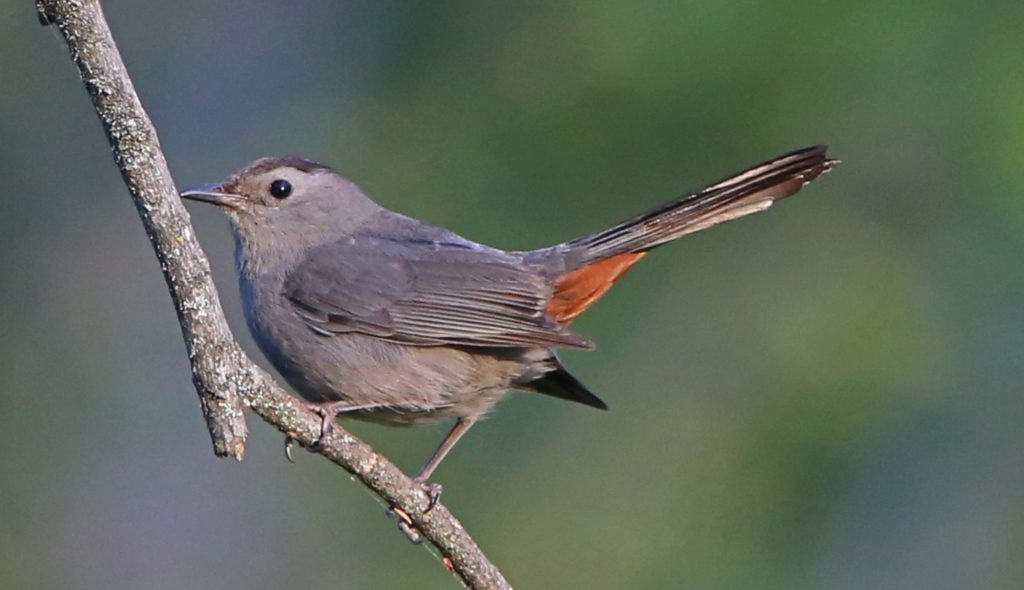Several years ago while working in my home office, I heard what I thought was a baby crying. Nah, I thought. Then I thought it sounded like a cat. I got up from the desk and wandered to the back yard to see what I could see. Nothing. Just heard it. Eventually I learned it was a catbird, a secretive creature that sounds enough like its namesake or a baby to fool me.

What we have around here is the gray catbird. It is gray except for a black cap, and a few black feathers or streaking on the tail and wings, and a splotch of red on its rump. Smaller than a robin, this songbird’s beak is a bit longer and more pointed. For years these birds would hide among the shrubs and in trees in my yard. I never saw them at feeders or birdbaths.
Advantageous seat
This secretive bird has yielded an idiom: The catbird seat. No one seems to know its exact origin. It likely originated in the south in the 1800s. Author and cartoonist James Thurber (1894-1961) wrote a short story “The Catbird Seat” about a man plotting a murder. And legendary sports commentator Red Barber (1908-1982) popularized the term when calling major league baseball games on the radio. In common parlance, sitting in the catbird seat is having an advantage or position of power, perhaps an unseen one.
Catbirds can’t be fooled
Researchers have found that catbirds are excellent at recognizing their eggs and ejecting those that don’t match. The brown-headed cowbird, considered a parasite (or slacker of a parent), lays its creamy white eggs with brown speckles in cup-shaped nests of other birds. Many birds do not realize the egg is not theirs. They incubate it, hatch it and feed it, often at the expense of their own offspring. It’s not uncommon to see a sparrow feeding a much larger bird that looks totally different. That scene is what prompted me to investigate cowbirds a while back.
This year my yard is full of catbirds, including juveniles. They seem to have broken their secretive habit to be in the open, especially at bird baths. I hear them and see them just about anytime I’m working outside. I’ve been able to observe their movements, hear their calls and smiling at juvenile antics. Such a joy.